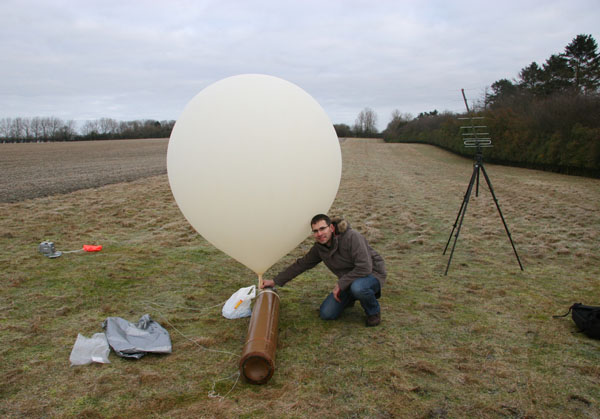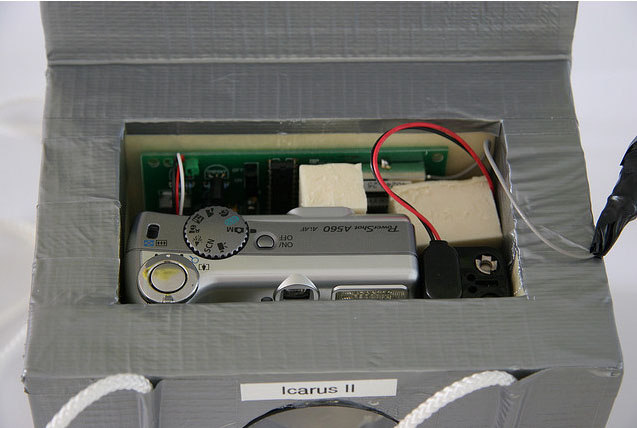 |
| Pictures by kind permission of Robert Harrison |
Near-space photography can be achieved with relatively simple equipment. When reasonably good quality images were first obtained by amateur photographers, even NASA expressed surprise and interest in how the images had been achieved.
Robert Harrison used a helium-filled high-altitude weather balloon to lift a lightweight compact camera (Canon Digital Ixus 400) and the associated control and tracking mechanisms to a height of 35 km. From this point the camera's field of view incorporated a 1,000 mile swathe of the Earth's surface. He also used GPS tracking technology to follow it flightpath and an amateur radio transmitter to locate the payload once the balloon had burst and it had returned to Earth by parachute. The whole project was achieved on a budget of £500.
The camera was wrapped in a protective layer of loft insulation and housed in a polystyrene box, and was triggered by a small automatic timer that released the shutter every 5 minutes.
|
|
| Pictures by kind permission of Robert Harrison |
